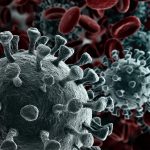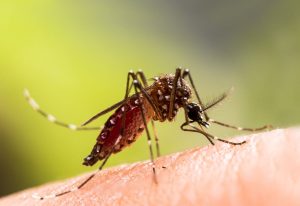Aggressive measures are needed in the world’s tropical regions to prevent the inevitable next global pandemic, an international coalition of researchers has concluded.
Epidemics around the world have largely been driven by viruses that spill over from wild animals into humans, mainly in tropical hot spots where a diverse number of animals come into frequent contact with mankind, researchers report.
To ward off the next pandemic, the world’s wealthiest countries need to invest in disease surveillance and medical care that can provide advance warning of emerging threats, the researchers argued.
“People say we need better vaccines and better drugs to counter the next unknown virus to emerge,” said report co-author Peter Daszak, president of EcoHealth Alliance, an international nonprofit. “What we’re saying is a little bit different. We need to go beyond that. We need to start preventing pandemics. We’ve got to try to disrupt them, just like we would any other threat, like terrorism.”
The coalition of 14 researchers convened in 2021 as the Independent Task Force on COVID-19 and Other Pandemics: Origins, Prevention and Response, and set out to perform an expansive review of major viral outbreaks during the past half-century.
They found that new virus outbreaks “tend to come from countries that have steadily growing populations that are in the tropical parts of the world,” including Southeast Asia, Africa and South America, Daszak said.
Because of global warming and human encroachment, another pandemic is not only likely to occur but also likely to be more devastating than COVID-19, said senior researcher Linda Saif, a virologist and immunologist with the Ohio State University’s Center for Food Animal Health.
COVID-19 was one of the most highly transmissible emerging viruses yet encountered, Saif said, but humanity lucked out that it wasn’t the killer it could have been for those infected.
For comparison, the SARS coronavirus that preceded COVID-19 had a death rate of 50% for people 60 and older, Saif noted. The new avian influenza, H5N1, has about a 60% death rate, while Ebola kills between 50% and 90% of those it infects.
Stopping pandemics in their tracks
“This should instill a sense of urgency to be better prepared,” Saif said.
A three-pronged approach is needed to detect viruses that could leap from animals to humans, and either prepare for them or stop them in their tracks, the researchers recommended.
First comes “smart surveillance” — public health officials and health care personnel stationed in these locales and tasked with tracking the hot spots “where humans have close contact with animals and spillovers are most likely to occur,” Saif said.
The live animal markets operating in these areas are a prime example of ongoing risk, Saif added, noting that COVID-19 originally emerged from the Hunan Seafood Market in Wuhan, China.
“You have large numbers of different species intermixed. All these species often are in cages on top of each other, so the urine and feces can spill over, and that can be the transmission point for spillover among species,” Saif explained. “Then the humans who slaughter these animals in the marketplace can have contact with the animal tissues and the blood, and that’s possible then that we’ll have transmission from these sources to humans.”
Health workers should regularly check both animals and humans in these hot spots for signs of concerning viral diseases, as well as humans in high-risk occupations that often bring them in close contact with wild animals, Daszak said.
Surveillance could also include monitoring of new types of disease in hospitals, Saif said, and regularly testing sewage and manure pits for new viruses.
“We can have a big picture of which viruses are there and which are the dominant ones and how they’re changing over time,” she suggested. “This could provide an early warning system at the local source for either new or reemerging pathogens that could infect humans. And our goal is to essentially stop them at the source of origin, if at all possible, so they can’t spread further and lead to an epidemic or pandemic.”
This smart surveillance would help inform the second prong of prevention — preparedness for a pandemic.
Developed countries need to pitch in
Researchers can use the surveillance to target particularly worrying viruses and prepare countermeasures, according to Saif.
“We can design and produce broad spectrum diagnostic tests and vaccines and therapeutics, and we can test these to make sure they’re effective against a wide range of viruses and variants if an initial outbreak occurs,” she said.
The third prong involves reducing the risk in these areas by changing the human behaviors that are driving this risk, the experts said.
“Human activities that alter the environment and bring humans and wildlife into close contact will fuel increases in emerging infectious diseases,” Saif said. “The key drivers include changing patterns of land use, global travel and trade, wildlife trade, human and livestock population growth, expanded urbanization, and climate change.”
Global strategies to counter these drivers will be essential, as well as action on the local level.
For example, Saif said new rules could be implemented that require safer handling of animals at open wildlife markets.
“If we can’t close these markets, it’s very important to implement regulations with penalties that will enforce certain practices that we know will reduce risk of spillover,” Saif noted.
The experts are optimistic that wealthy countries in a position to help fund these activities will pitch in, particularly since COVID-19 has opened everyone’s eyes to the economic havoc that a pandemic can wreak.
“The cost of pandemics is rising, and it’s not rising gradually. It’s rising exponentially. It’s getting dramatically worse decade by decade,” Daszak said.
“If you look at the cost-benefit analysis, if we spend $100 billion, we get a 100-to-1 return on investment by preventing pandemics. So the return is very high, especially if you consider that the richer countries are not usually the places where pandemics start, but once they get here, we’re the ones that have the biggest economic hit every time,” he added.
The coalition’s report was published Oct. 10 in the Proceedings of the National Academy of Sciences.
More information
The World Organization for Animal Health has more on strategies to prevent future viral threats.
SOURCES: Peter Daszak, PhD, president, EcoHealth Alliance, New York City; Linda Saif, PhD, virologist and immunologist, Ohio State University’s Center for Food Animal Health, Columbus; Proceedings of the National Academy of Sciences, Oct. 10, 2022, online
Copyright © 2024 HealthDay. All rights reserved.

-300x200.jpeg)









-300x241.jpeg)




